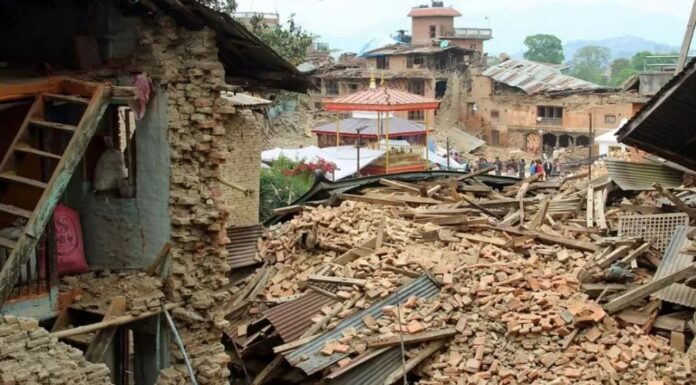Ten years after the devastating 7.8-magnitude earthquake struck Nepal on April 25, 2015, the nation has made strides toward resilience, yet scars remain. The disaster claimed nearly 9,000 lives, injured over 22,000, and left millions homeless, reducing historic temples and palaces in the Kathmandu Valley to rubble. For residents like Ram Bahadur Nakarmi, a 61-year-old from Bhaktapur, the fear persists. His four-story home, cracked but standing, serves as a daily reminder of the tragedy. “Even now, it is still scary,” Nakarmi told AFP. “Tremors terrify us—we run outside.”
The 2015 quake exposed critical weaknesses in Nepal’s disaster response, with initial rebuilding efforts hampered by political infighting, bureaucratic delays, and confusion. However, the past decade has seen remarkable progress. Official data indicates that nearly 90% of destroyed homes have been reconstructed, alongside thousands of schools, health facilities, and public buildings. Iconic cultural landmarks, including centuries-old temples, are gradually being restored, preserving Nepal’s heritage and tourism appeal.
Also Read: India vs. Pakistan: A Comparison of Military Strength in 2025
🇳🇵🔥 Earthquake in Katmandú, Nepal in april 25, 2015.
— The Big One || El Evento Astrológico del Siglo ☄🌋 (@TheBigOne711) April 25, 2025
➡️Ten years ago on this very day at 11:56 AM Nepal shook with a magnitude of 7.8°, reaching a moment magnitude of 8.1°, the event lasted only 50 seconds during which it caused $10 billion in losses and 9,000 casualties. pic.twitter.com/AMtlHkteft
A joint assessment by Nepal’s National Society for Earthquake Technology and the Global Quake Model highlights significant advances in resilience. Retrofitting and rebuilding initiatives have reduced the number of buildings at risk of complete collapse by 44%, bolstering preparedness for future quakes. Dinesh Prasad Bhatt, chief of the National Disaster Risk Reduction and Management Authority, emphasized a shift in focus: “Our initial years were about rebuilding. Now, we must prioritize areas unaffected in 2015 but still at risk.”

Despite progress, challenges remain. Many, like Nakarmi, lack the funds to fully repair their homes, and ongoing tremors fuel anxiety. Nepal’s journey underscores the importance of sustained investment in disaster preparedness to protect lives and heritage in this seismically vulnerable region.
Key Points: Nepal’s Path to Earthquake Resilience
- 2015 Earthquake Impact: A 7.8-magnitude quake on April 25, 2015, killed nearly 9,000, injured over 22,000, and left millions homeless, destroying homes and historic Kathmandu Valley landmarks.
- Lingering Challenges: Residents like Ram Bahadur Nakarmi in Bhaktapur live in damaged homes due to financial constraints, with ongoing tremors fueling fear.
- Initial Setbacks: Post-quake recovery faced delays from political infighting, bureaucracy, and weak disaster response systems.
- Rebuilding Progress: Nearly 90% of destroyed homes, plus thousands of schools, health facilities, and public buildings, have been reconstructed over the past decade.
- Cultural Restoration: Historic temples and palaces are being restored, preserving Nepal’s heritage and tourism appeal.
- Improved Resilience: A 44% reduction in buildings at risk of collapse, due to retrofitting and rebuilding, per Nepal’s National Society for Earthquake Technology and Global Quake Model.
- Future Focus: Authorities aim to strengthen at-risk areas unaffected by the 2015 quake, prioritizing proactive disaster preparedness.



